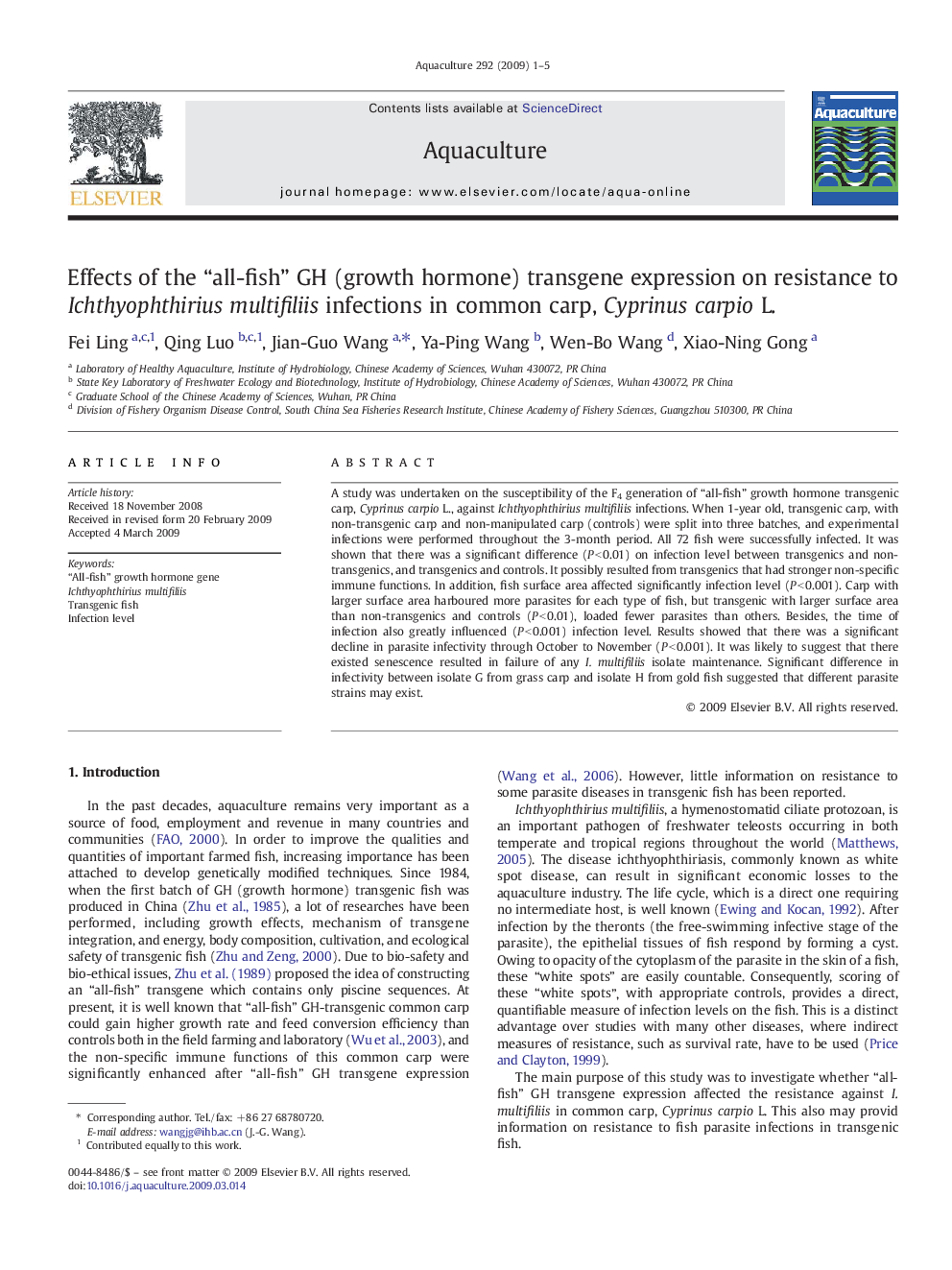| Article ID | Journal | Published Year | Pages | File Type |
|---|---|---|---|---|
| 2424022 | Aquaculture | 2009 | 5 Pages |
A study was undertaken on the susceptibility of the F4 generation of “all-fish” growth hormone transgenic carp, Cyprinus carpio L., against Ichthyophthirius multifiliis infections. When 1-year old, transgenic carp, with non-transgenic carp and non-manipulated carp (controls) were split into three batches, and experimental infections were performed throughout the 3-month period. All 72 fish were successfully infected. It was shown that there was a significant difference (P < 0.01) on infection level between transgenics and non-transgenics, and transgenics and controls. It possibly resulted from transgenics that had stronger non-specific immune functions. In addition, fish surface area affected significantly infection level (P < 0.001). Carp with larger surface area harboured more parasites for each type of fish, but transgenic with larger surface area than non-transgenics and controls (P < 0.01), loaded fewer parasites than others. Besides, the time of infection also greatly influenced (P < 0.001) infection level. Results showed that there was a significant decline in parasite infectivity through October to November (P < 0.001). It was likely to suggest that there existed senescence resulted in failure of any I. multifiliis isolate maintenance. Significant difference in infectivity between isolate G from grass carp and isolate H from gold fish suggested that different parasite strains may exist.
